Dakine Campus L 33L Backpack Review
An uncomfortable harness system holds back the Dakine Campus L 33L Backpack, an otherwise spacious pack with a useful insulated pocket.
Our Verdict
Save time. Get access to brief summaries of our reviews so you can browse and make decisions more efficiently.
Pros
- Roomy front and main compartments handle bulky gear well
- Can stand on its own despite its large proportions
- Insulated cooler pocket maintains food and drink temperature longer
Cons
- Loose threads not a good sign for long-term durability
- Gear deep inside the front compartment can be hard to access
- Food containers sit vertically inside the cooler pocket, risking spills
Technical Details
-
Capacity
33l
-
Weight (lb)
1.7 lb (0.8 kg)
-
Dimensions
20.5 in x 13 in x 8 in (52.1 x 33 x 20.3 cm)
-
Notable Materials
Recycled Polyester, Recycled Nylon, YKK Zippers, Duraflex Hardware
-
Manufacturing Country
China
-
Laptop Compartment Size
16"
-
Warranty Information
Full Review
Just because Dakine’s Campus L 33L Backpack is designed with school use in mind doesn’t mean we’d dismiss it from travel use. After all, where would the world be if we exclusively used phones for calls and texts, right? So many vacation photos wouldn’t exist! Okay, while backpacks may not be as multipurpose as the smartphone, they are general-purpose enough to be flexible even if brands gear them towards a particular niche.
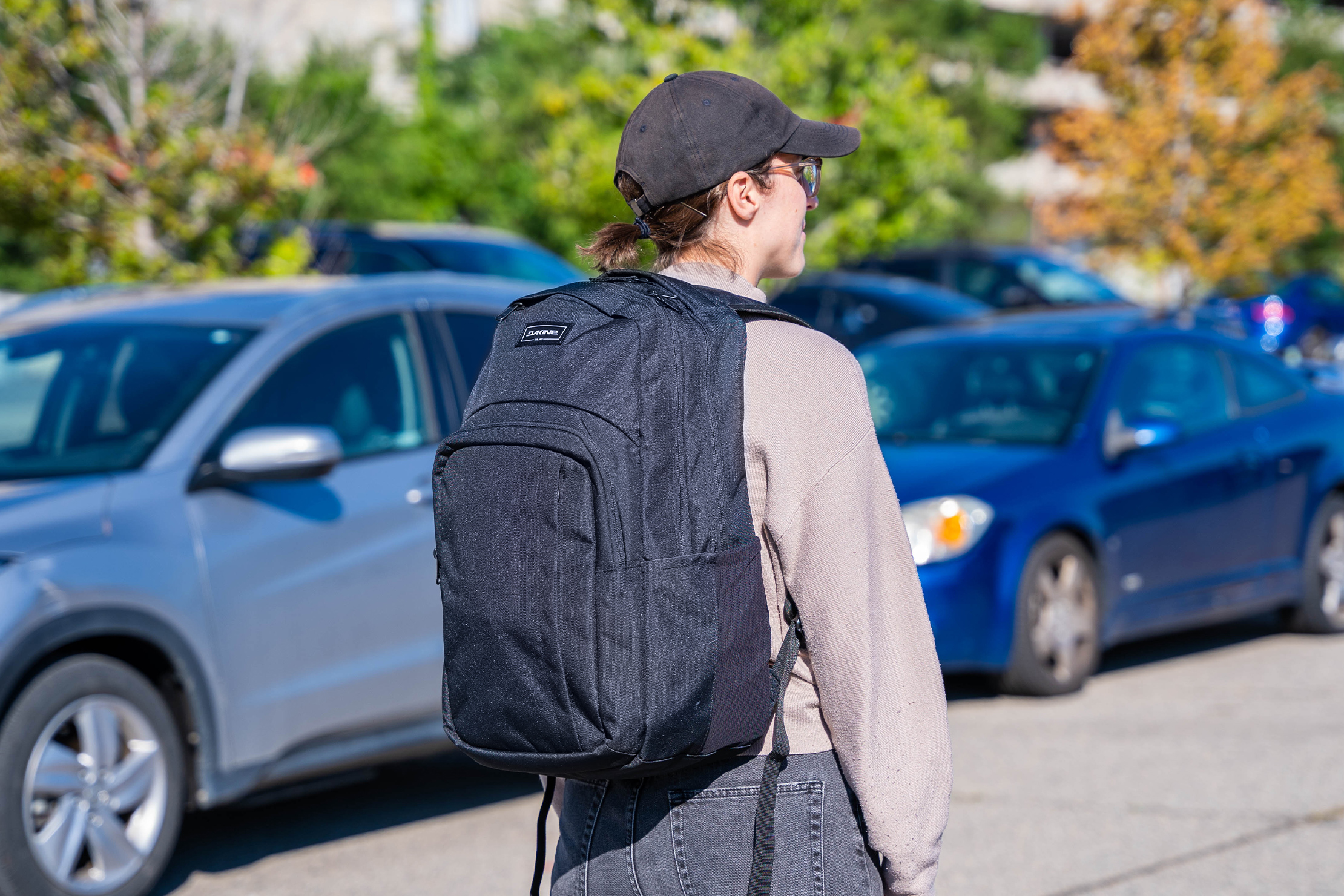
As optimistic as that aspiration may be, the Campus L falls short as a travel backpack in some respects. First and foremost, its harness system feels uncomfortable, despite its memory foam-like padding. Loose threads also cropped up, which brings into question the bag’s long-term durability, something that’s important to consider if you plan on going on a lengthy faraway trip.
On the other hand, the Campus L also has its merits in other features, namely an insulated food pocket, the ability to stand on its own, and generous overall capacity. Now, let’s weigh these pros and cons by diving into the details, shall we?
External Components
We begin our review on the outside of the Campus L, and immediately, there’s a problem. The all-black exterior can work wonders in hiding stains and imperfections on a bag as big as this. We’d know since we heavily favor darker colorways, partly for their pet hair and drool-hiding advantages. However, we still can’t help but notice a lot of loose threads around the Campus L, particularly around the stitching and even the zipper pulls.
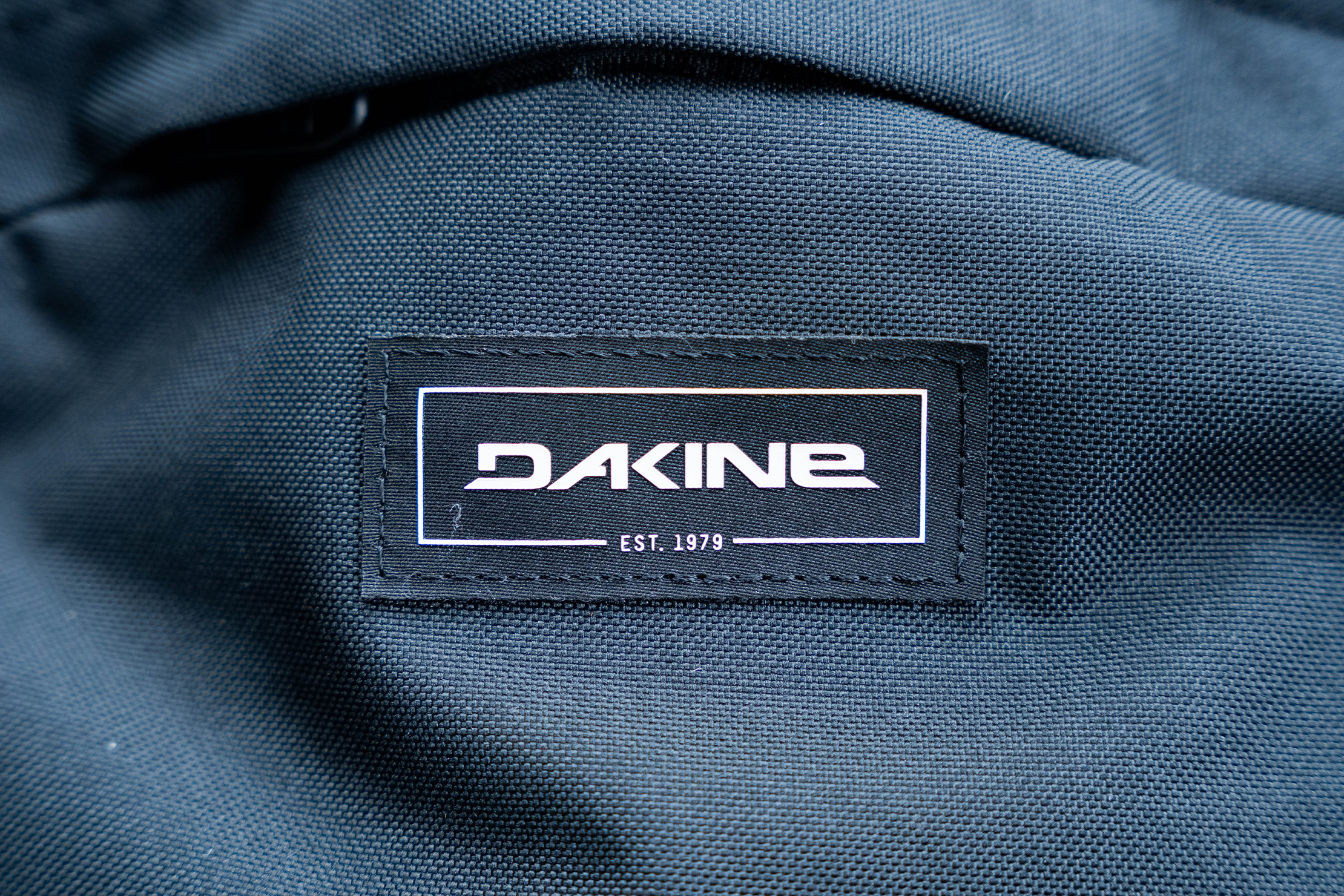
This makes us slightly worried about the patch bearing Dakine’s logo. Its corners are beginning to fold in. Mind you, it’s nowhere near as bad as we’ve seen with the YETI Crossroads 35L, but we’ll still keep an eye on it. The good news is that these small imperfections are more cosmetic in nature than they are immediate signs that the bag is falling apart. If anything, it just makes us more cautious of the Campus L’s longevity.
Still, the rest of the bag is fairly well-made. The main fabric is made of 600-denier recycled polyester with a water-repellent finish. It’s not the toughest fabric we’ve seen on a backpack, but it has held up well in everyday use while giving the Campus L a sleek look. Take note that we’re sampling the black colorway in this review, but other colorways may use different materials.
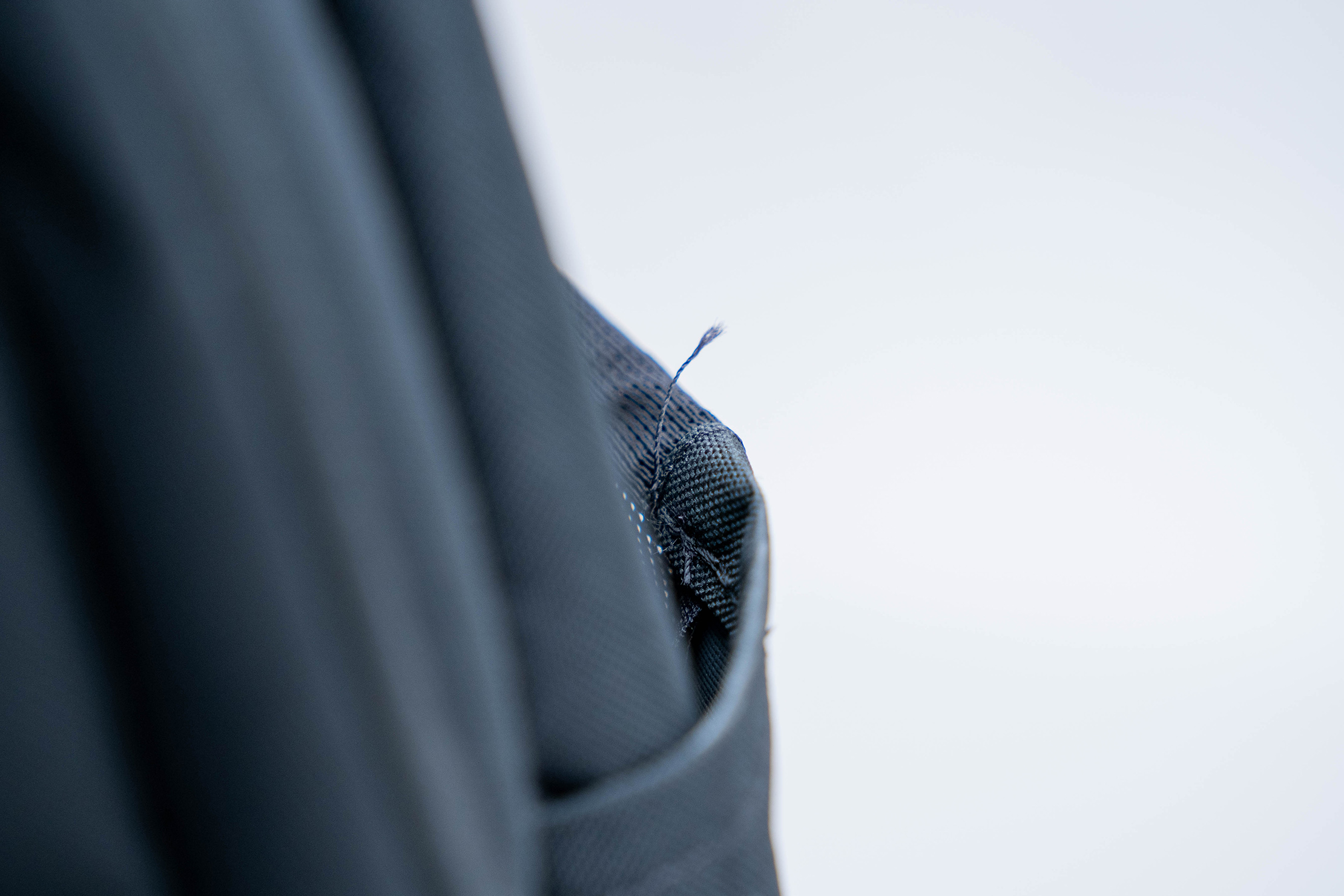
In terms of external features, the Campus L is rather sparsely populated. There are really only two features worth mentioning: the top grab handle and the water bottle pockets. For the former, it’s thick and padded, a far cry from the usual nylon loop you’d typically find affixed between a backpack’s shoulder straps.
Our only issue with this handle is its placement. It’s centrally located on top of the bag, which is good for comfort and balance. In fact, we like the way it’s widely stanced for better comfort. However, since it’s relatively far from the back panel, it also means it’s harder to hang off a bathroom stall’s hook—something we find ourselves wanting to do whether we’re traveling or running around campus.
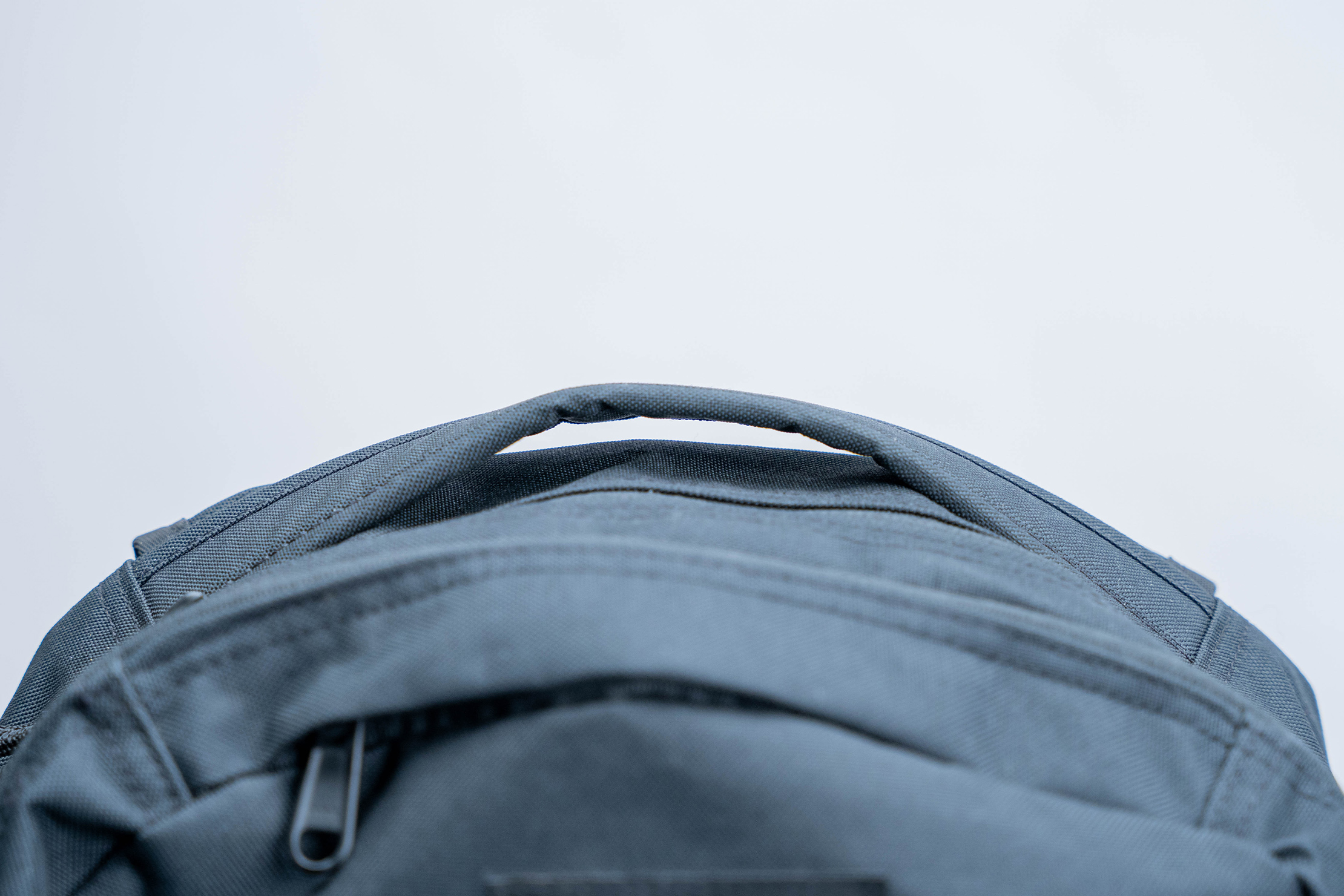
Water bottle pockets are also a feature that we’d want in a campus life-oriented backpack. The Campus L obliges by having two of them that are fairly deep. A 26-ounce YETI Rambler slides in easily, and so does a 24-ounce Owala FreeSip Water Bottle. Even though these bottles look completely fabric, the back half is actually stretchy mesh that gives them some volume to work with.
The water bottle pockets have their own caveats, too. To be clear, the water bottle pockets themselves work fine, being able to hold onto water bottles relatively firmly. The issue is that bottles can obstruct the main compartment’s zippers if they’re zipped all the way down the sides. It’s not a huge issue per se, but just make sure to keep the zippers along the top to avoid having to hunt for them.
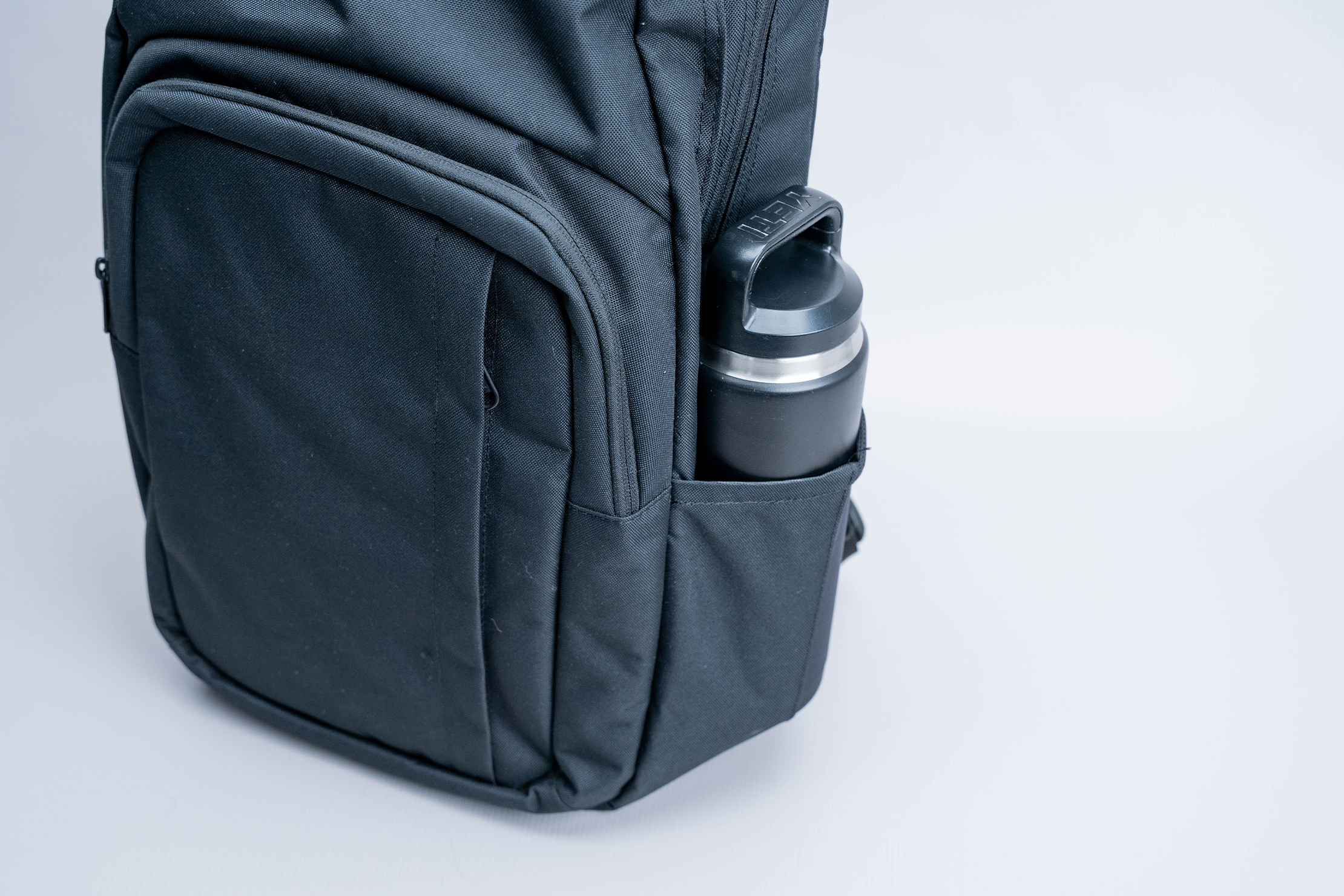
The Campus L is rated at a rather large capacity of 33 liters—that’s quite big, encroaching on travel backpack territory, even. As such, the harness system plays an important role in taming the bag’s size, especially once it’s loaded up. Unfortunately, the Campus L feels uncomfortable to carry overall.
Part of the reason is the style of the shoulder straps. A collar at the top joins both straps, and they have a slightly curved shape flowing down. This isn’t anything new, as we’ve definitely seen this design used on a variety of other backpacks. However, the design of the Campus L’s shoulder straps feels harsher than the others we’ve tried.
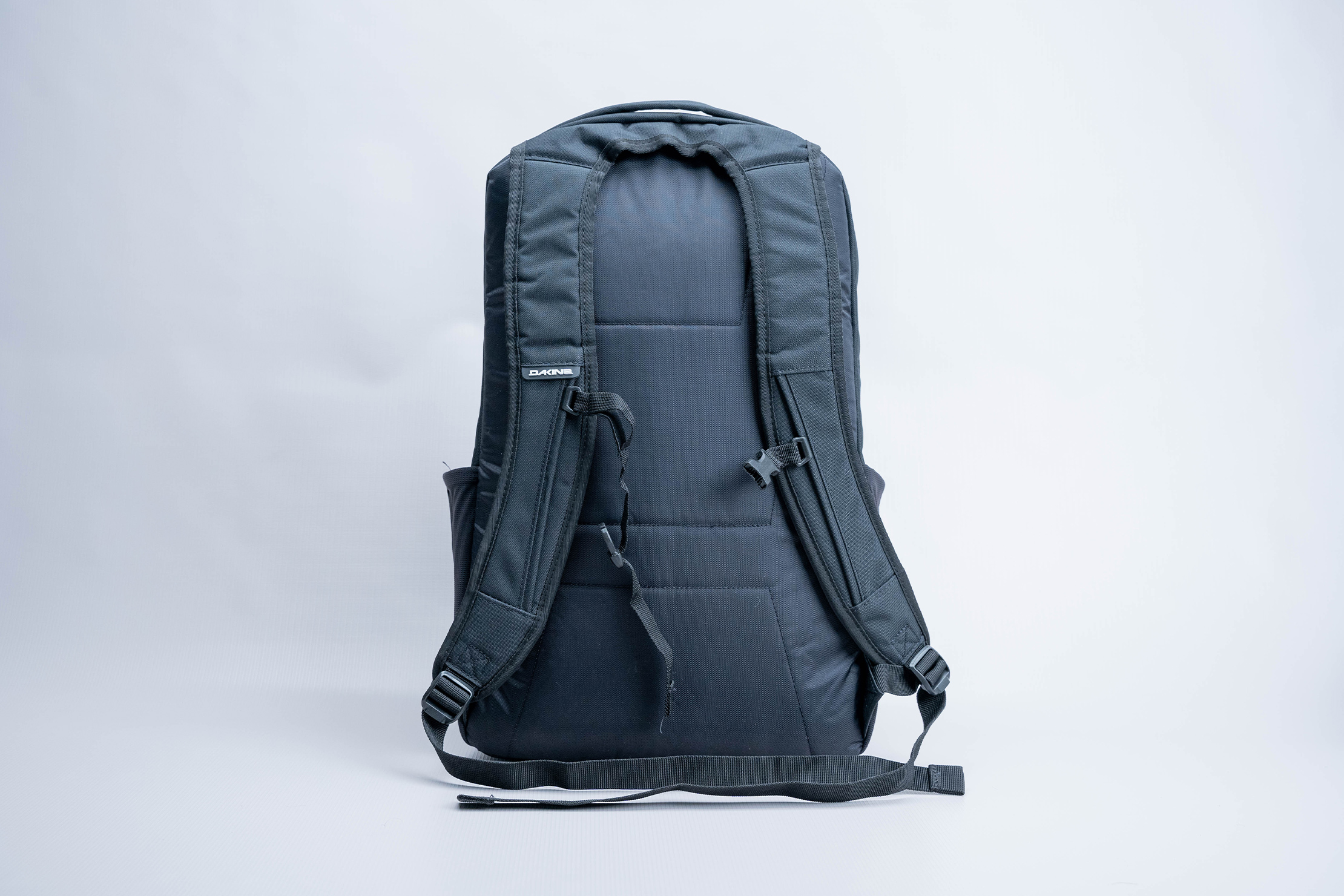
Apart from the shape, the main culprit we’d point to for any discomfort is the piping on the inner edge of the shoulder straps. Because the straps are also relatively wide, the piping sits close to the neck area where they scrape. On the plus side, the straps’ padding feels similar to memory foam, and it’s not really lacking in terms of softness or support. The same padding can be found on the back panel itself.
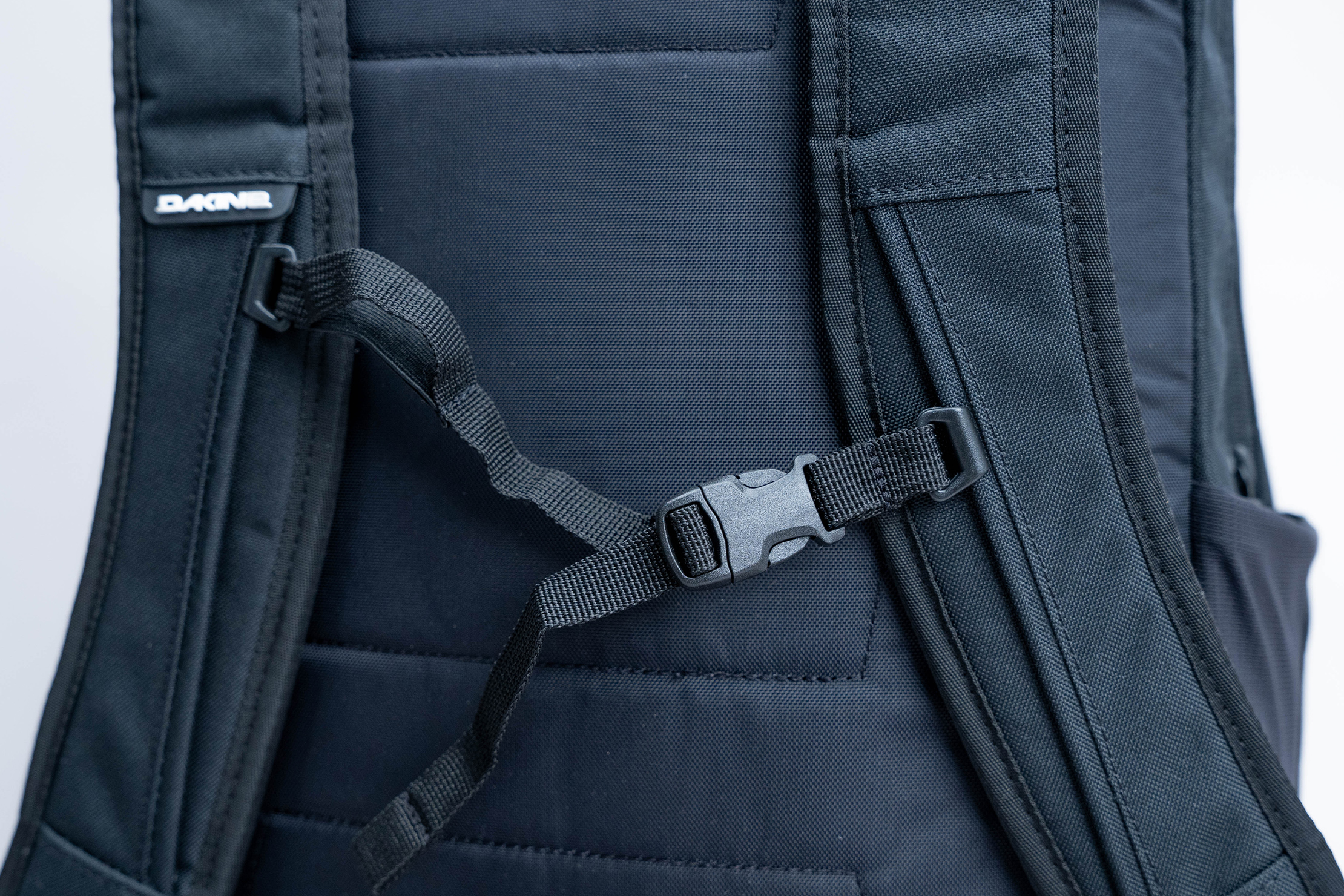
Lastly, the shoulder straps also come with a sliding sternum strap. This is one of the few more positive aspects of the harness system overall. We really like it when sternum straps are easy to adjust and have a wide degree of movement—both are traits that are mostly found with this kind of on-rails design.
Fit Notes
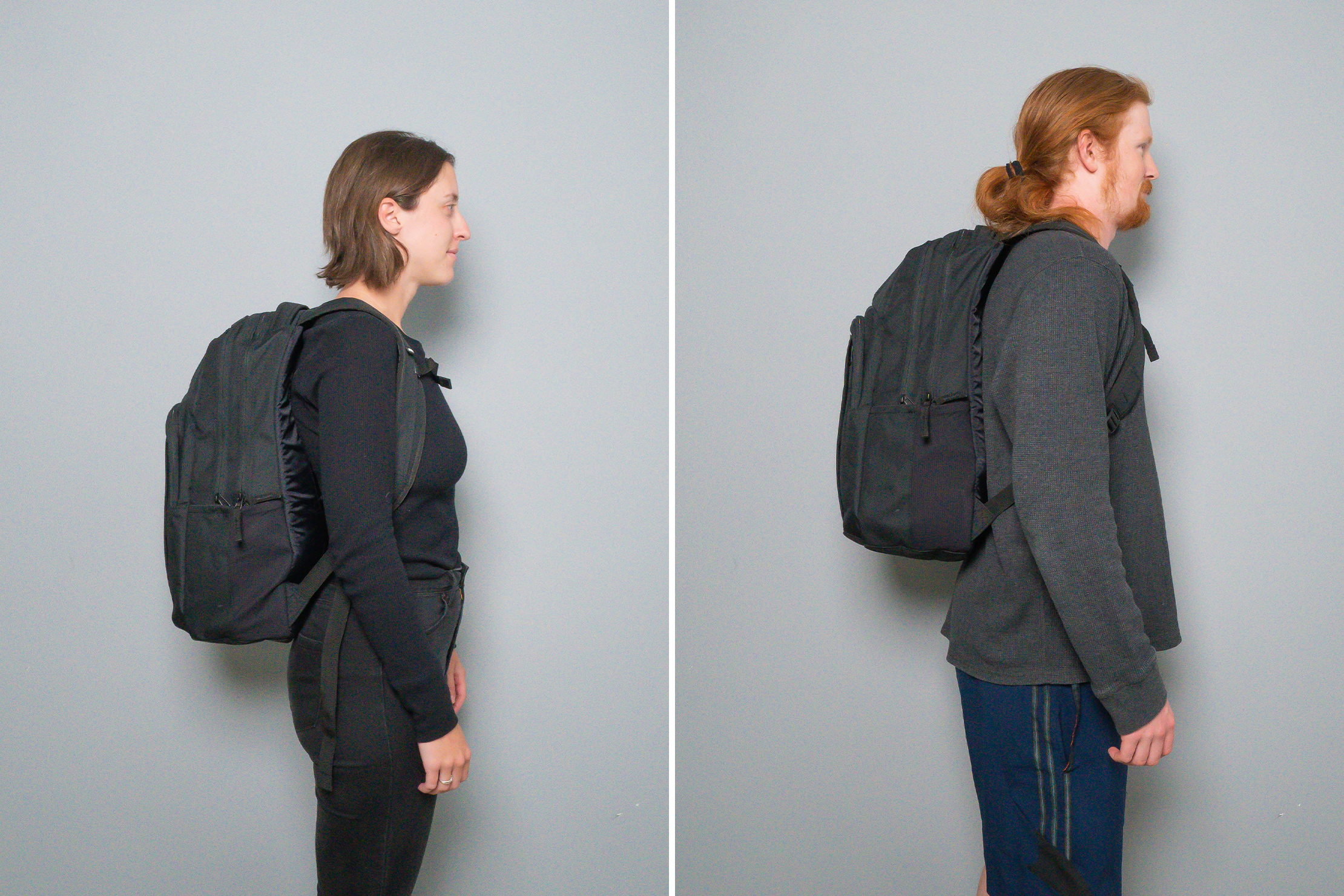
Now let’s get into the specifics of what it’s like to carry the Campus L. As we’ve mentioned earlier, because of the way the shoulder straps are shaped and the piping, we can really feel them dig in around the sides and back of the neck. To mitigate this, we opt to loosen the straps for a more relaxed fit. Consequently, this also means that the Campus L also sits lower.
Even in this looser and lower down position, the Campus L’s collar still somehow scrapes the back of the neck. Furthermore, it makes a sizeable gap between the lower back area and the bag’s back panel, which doesn’t feel right; you want the back panel to rest fully on your back.
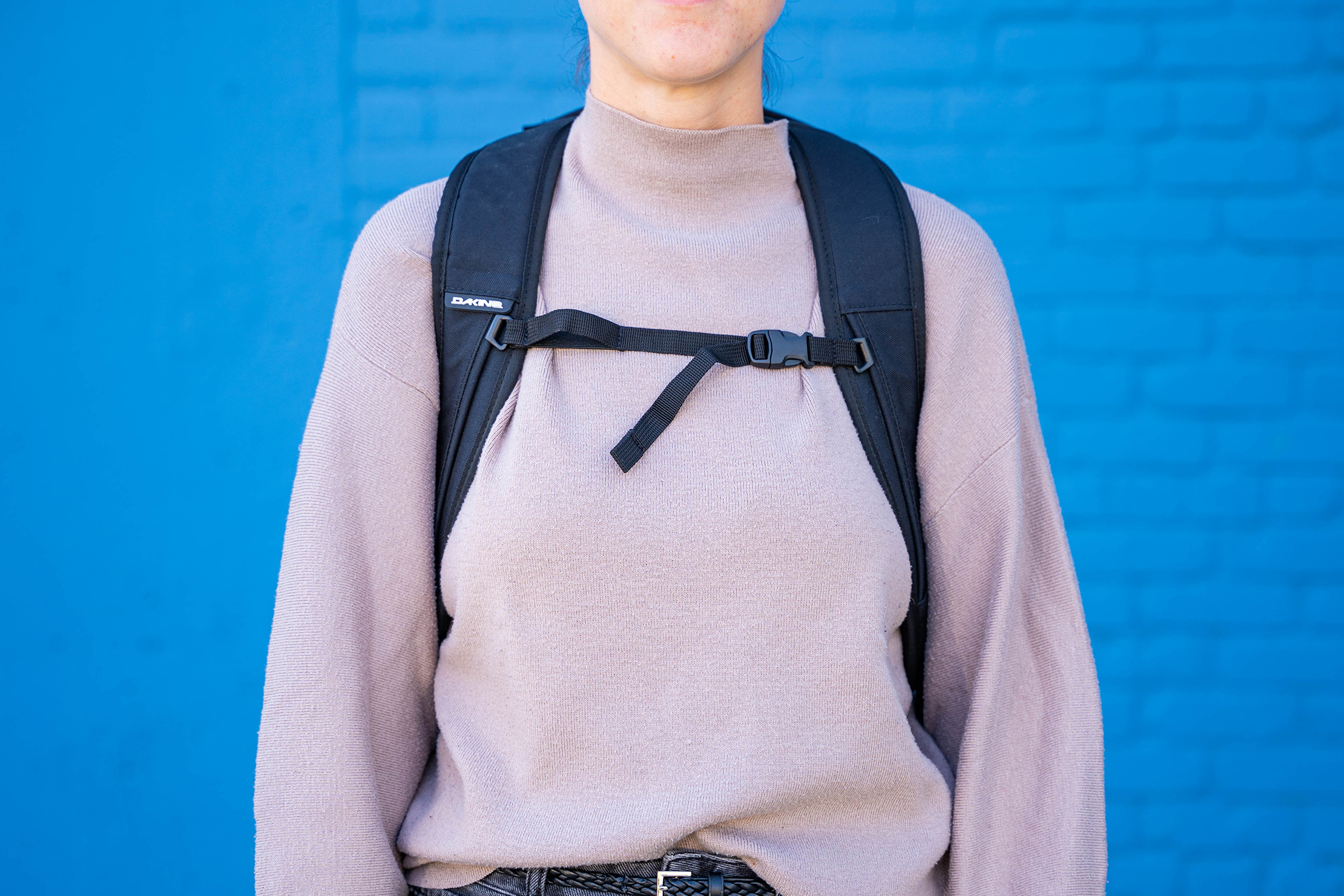
In terms of looks, though, the Campus L does manage to look rather sleek for its size. Despite its 33-liter proportions, the shape is still fairly low-profile and doesn’t look messy or baggy. Of course, that volume still has to go somewhere, and that somewhere is the lower back area where there’s an overhang that we mentioned earlier.
Inside The Backpack
Worry not, though, as all of the Campus L’s size and space translate very well into usable capacity in its compartments. That said, we’ll start with the smallest of these compartments: the sunglasses pocket.
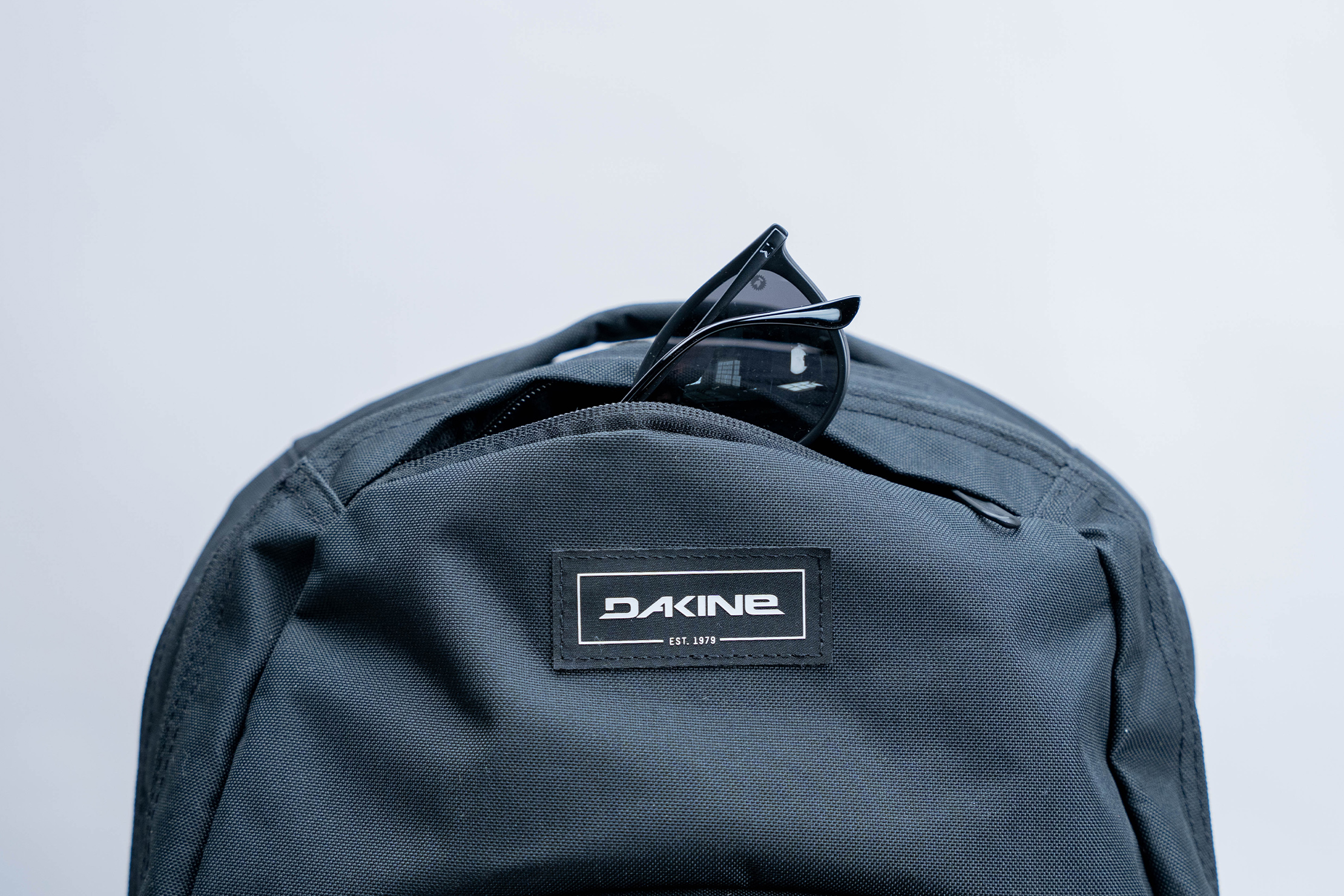
It’s stealthily tucked away under a fabric welt just above the logo. As an aside, this more hidden approach is the antithesis of how lululemon does it with their Cruiser Large Backpack 28L. On that similarly large backpack, the sunglasses pocket is big, prominent, and more akin to a built-in hard case. The one on the Campus L is much more subtle but still provides protection through the use of a soft liner that prevents scratches. It gets bonus points, too, since it doesn’t rob too much space in the main compartment and doesn’t bump into anything that may cause damage.
At the front of the Campus L is a large zippered pocket oriented vertically. This is your all-purpose dump pocket—at least, that’s how we used it. There are no smaller pockets, loops, or even a key leash inside, so there’s really no means of getting gear organized. Smaller accessories like dongles and adapters tend to fall to the floor, where they get mixed up. To that end, we elect to keep three relatively bulky items here, namely keys, a wallet, and a smartphone.
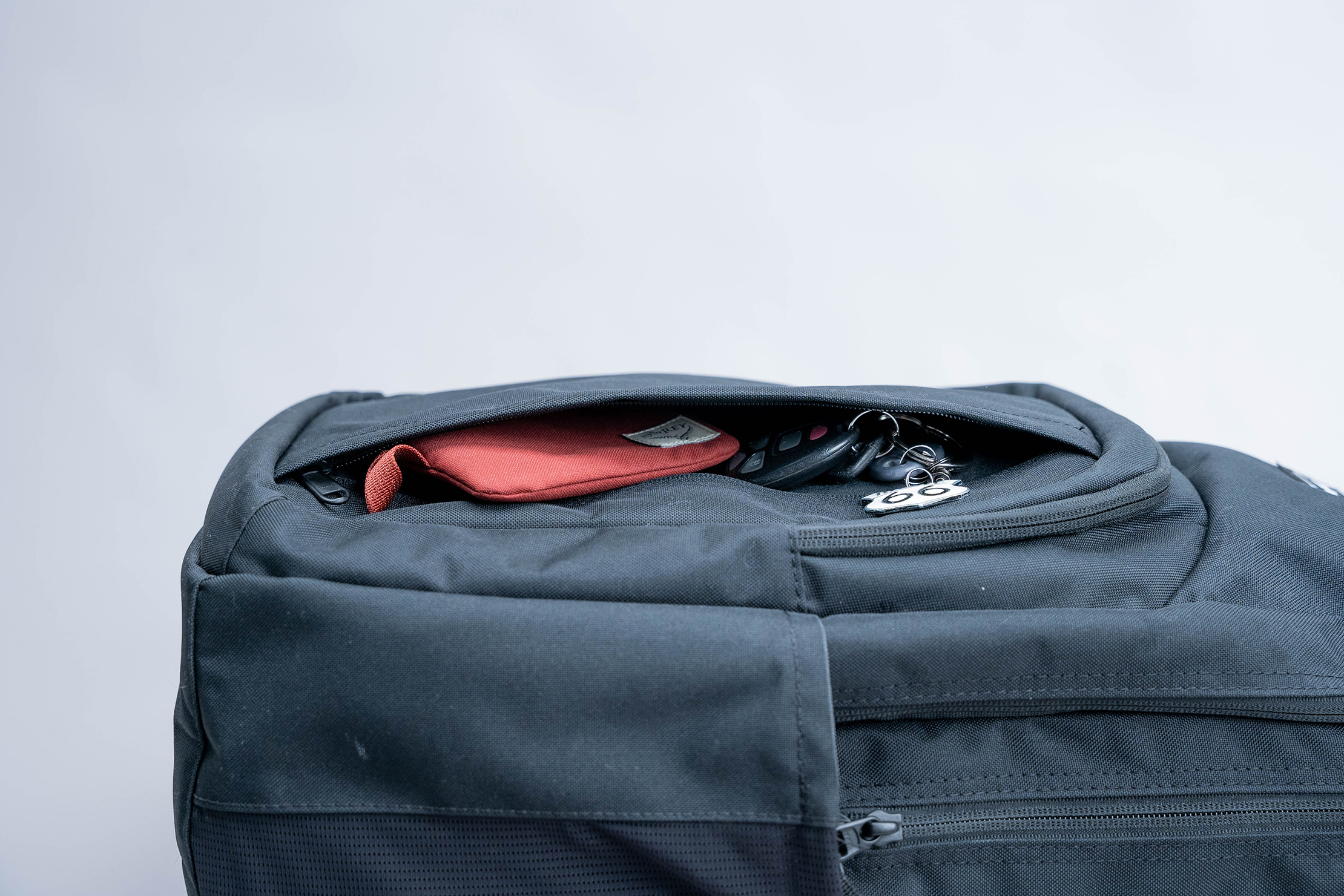
Next up on our tour of the Campus L is its insulated cooler pocket. This is arguably the bag’s centerpiece, and it’s a pretty neat party trick—that is if your idea of a party trick involves a riveting explanation of the 1st law of thermodynamics. We’ll spare you the lengthy explanation, but the tl;dr is that because the pocket has a layer of insulation, hot food’s heat gets trapped, and, conversely, cold beverages are shielded from outside heat. Needless to say, putting both hot and cold food inside would render this feature useless.
All of that said, does the insulated pocket actually work? The answer is yes, but with an asterisk. Of course, the pocket can only keep a hot meal or a cold drink’s temperature for so long before it eventually goes room temperature. In other words, it’s no substitute for a real cooler, so eat or drink whatever you’re storing sooner rather than later.
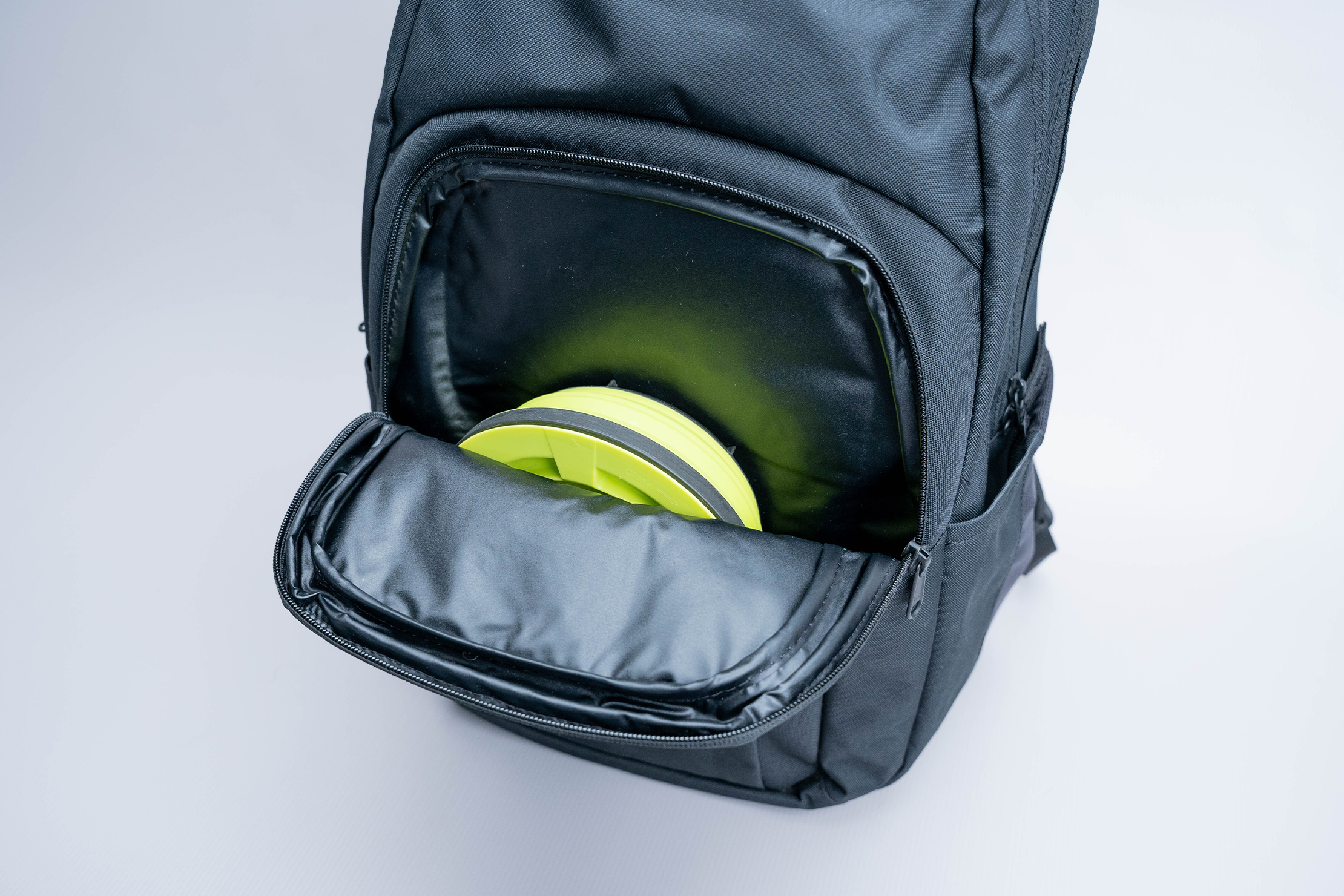
However, we think the biggest drawback to the insulated pocket is that food containers need to sit vertically in order to fit. That may lead to spills if said container isn’t sealed tightly and gets jostled throughout the day. Fortunately, the liner is quite slick and should be easy to clean in case something does spill.
The Campus L also has a front compartment. This acts as the bag’s secondary major storage area, and it also houses a handful of small liner pockets. Two liner pockets, two pen silos, and a zippered pocket get gear organized. Our only complaint here is that accessories in the liner pockets can slip out fairly easily since there’s no elastic to hold them in. Fortunately, the zippered pocket can take in anything too small and easily lost.
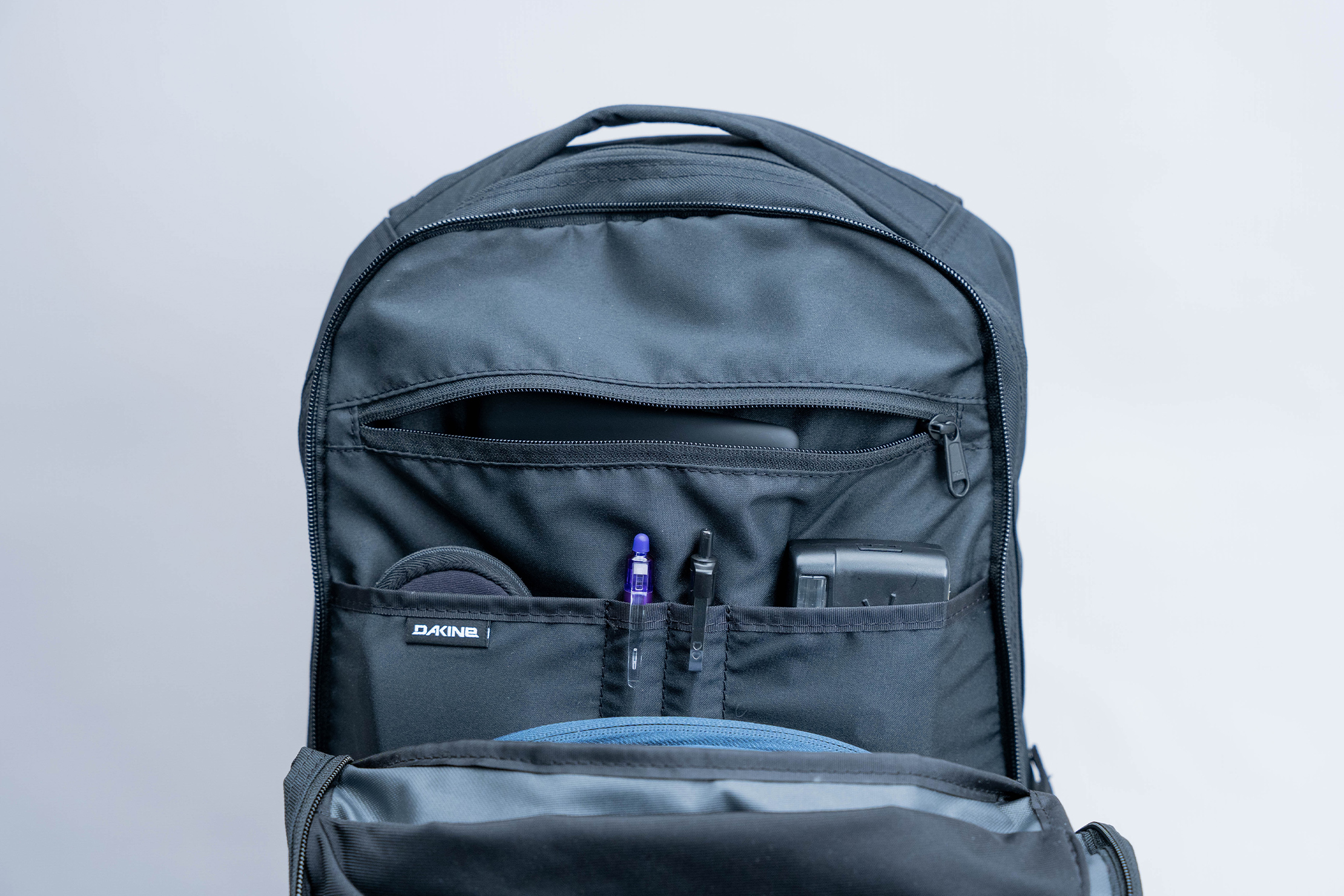
A lot of large backpacks come with a secondary front compartment like this. What strikes us about the Campus L’s is how cavernous it feels. It goes quite deep, to the point that we have trouble taking out gear that’s settled on the bottom. The good news is that the compartment’s opening is quite wide and can be folded over easily enough for easier access.
The main compartment also opens up horseshoe-style. Curiously this is the only compartment whose zippers have pulls. Whether or not that’s an intentional design choice is a mystery, but it is a nice memory hack that helps us remember which zipper opens which compartment.
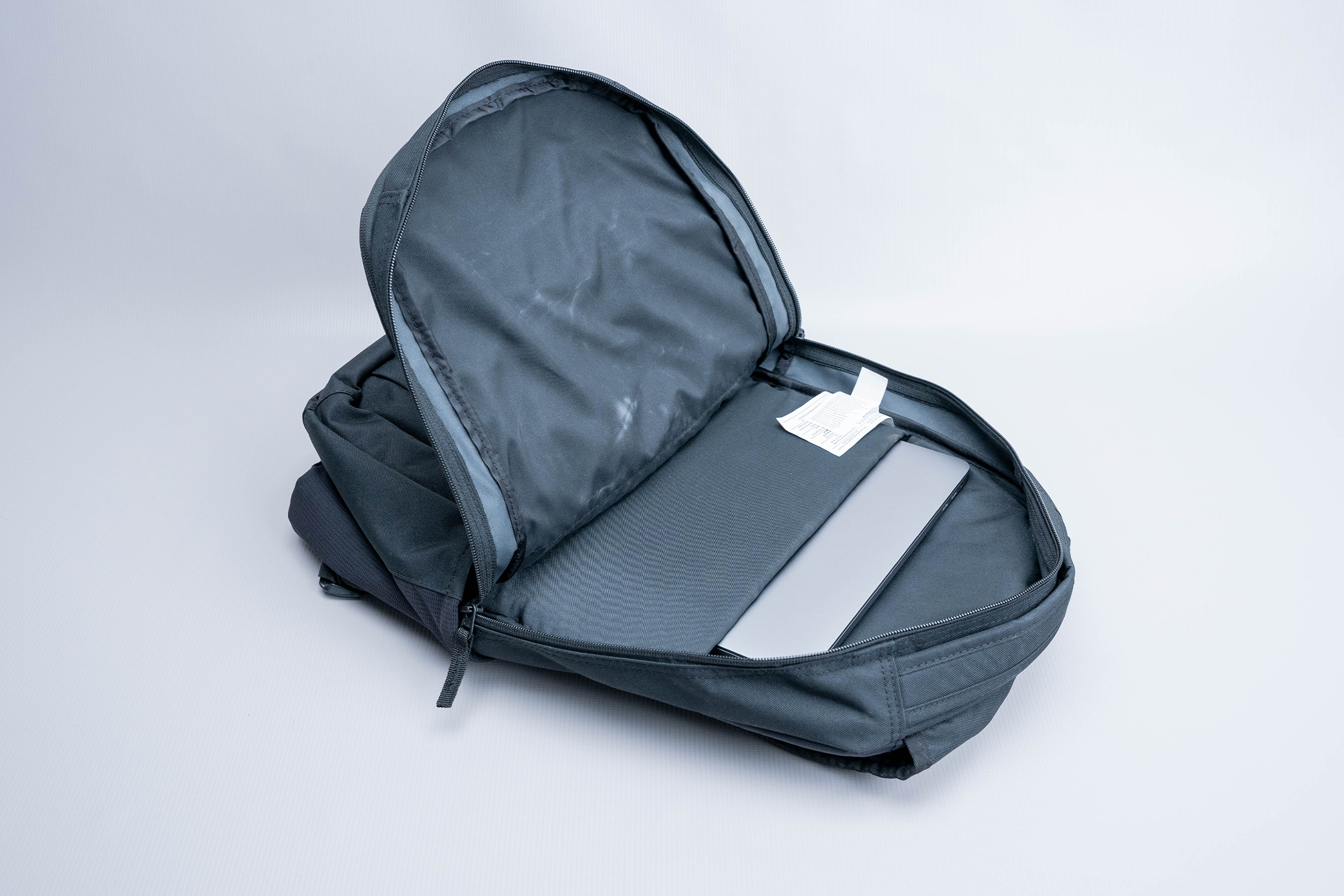
Inside the main compartment, you get more of that cavernous space we saw earlier in the front. There’s enough room for a weekend’s worth of clothing in packing cubes (granted, you plan your packing list carefully). Towards the rear, you’ll find a laptop sleeve that’s well-padded on the front and back side. All in all, it’s a simple main compartment with an emphasis on space.
We’ve already mentioned how deep and spacious both of the Campus L’s compartments are. The problem with space is that it also has to be easily accessible in order to be efficiently used. Something that greatly aids in this is the Campus L’s ability to stand quite well on its own. We can prop it up and tilt it some degrees forward and back, and it still manages to right itself most of the time. This is something we’re wary of doing with other backpacks, but the Campus L seems to excel in this one area.
Leaving aside the Campus L’s main focus of being a school backpack, it also has compelling features that are useful for travel. Its sheer size is a boon for those who like its daypack style but want more space typically seen in larger travel backpacks.
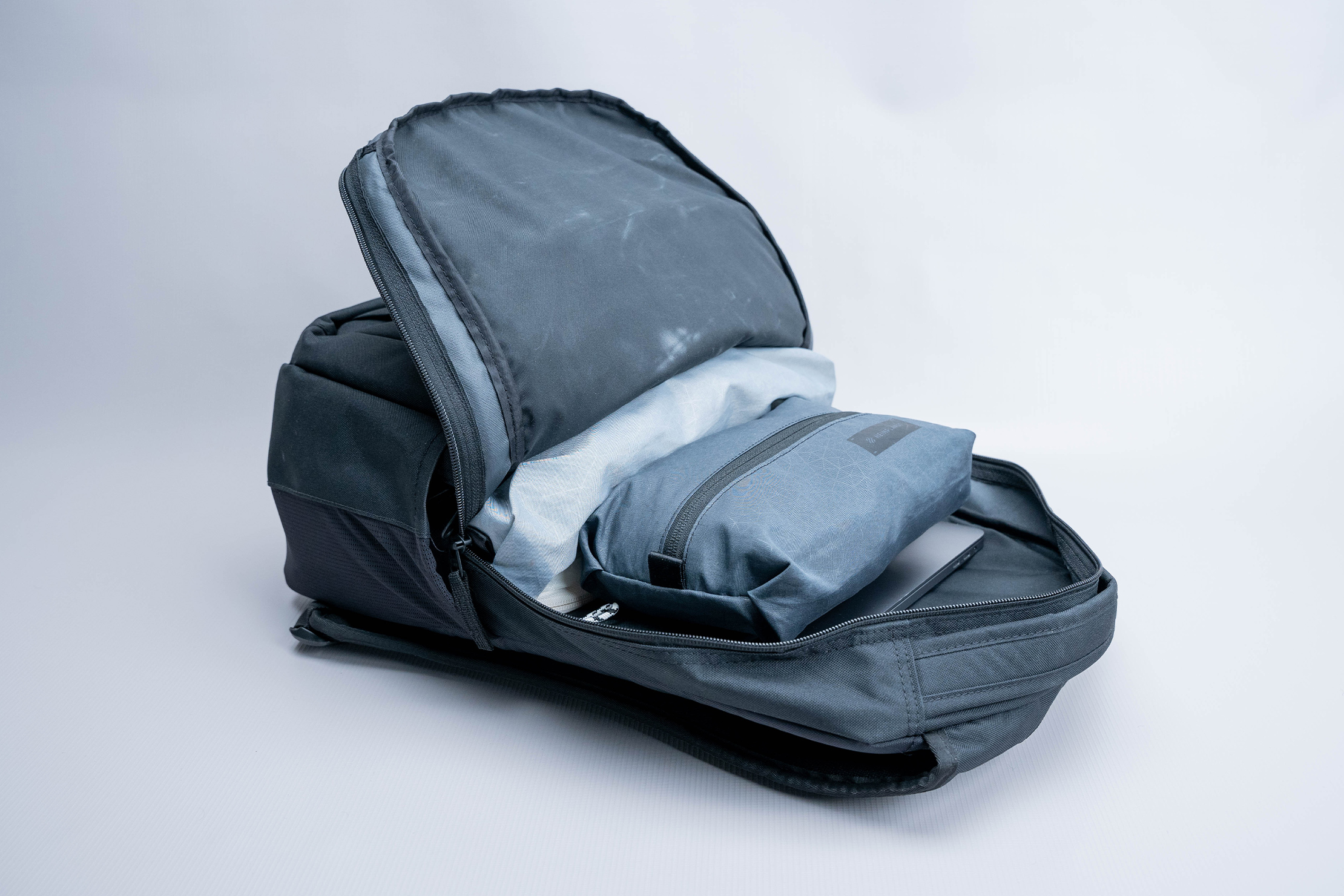
Still, we can’t ignore how poorly its harness system performs in terms of comfort, and the many loose threads that have cropped up over our testing. Those areas could use some polish because the Campus L would make an otherwise good travel backpack.
Usage Timeline
Condition: Excellent
- Some loose threads on the stitching
- Shoulder straps are squishy in a memory foam-like way
- Interested to see how well the cooler pocket works
Condition: Excellent
- Digging the sleek, somewhat low-profile look
- Loose threads all around aren’t a great look
- Uncomfortable to wear pretty much out of the gate
- Admin panel pockets aren’t super secure
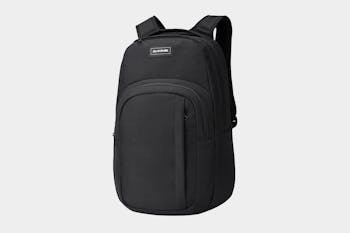






Get your questions about the Dakine Campus L 33L Backpack answered from our team and the Pro Community right here on the page. Plus, join discussions with other members about gear, guides, and more.
Join Pack Hacker Pro or, Sign In